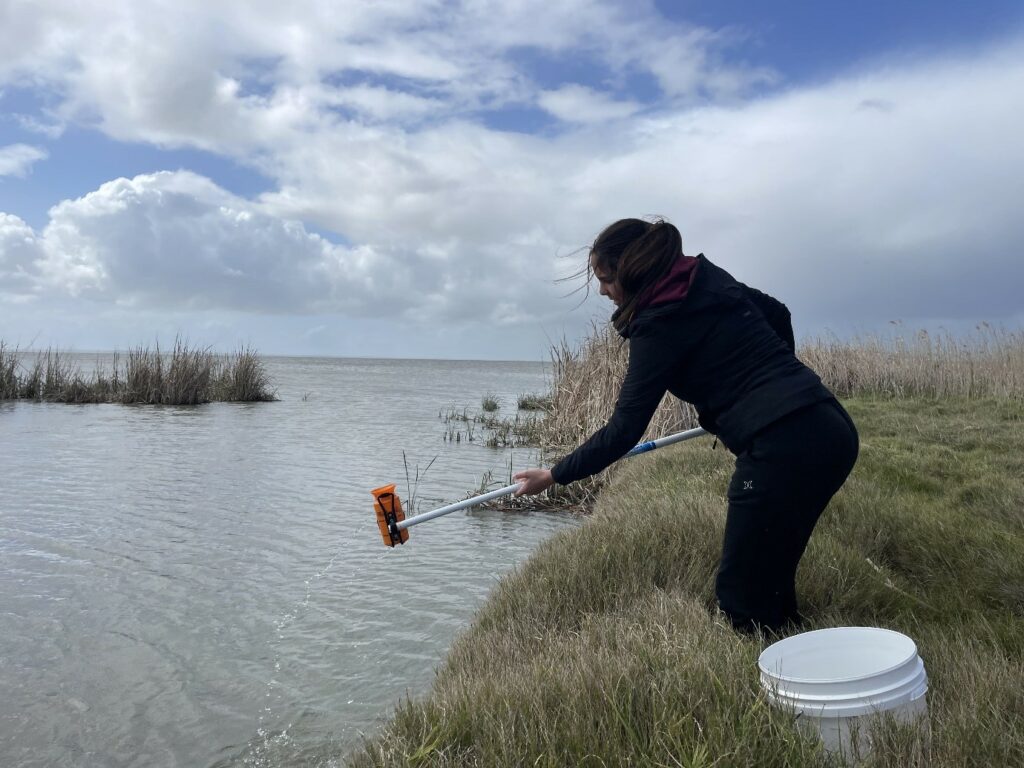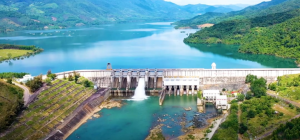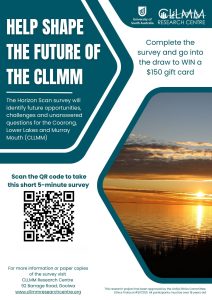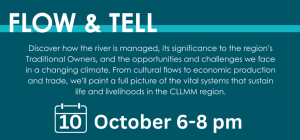The Goyder Institute’s new Coorong, Lower Lakes and Murray Mouth (CLLMM) Research Centre recently joined the effort to further understand the presence of a nationally endangered freshwater fish in the Lower Lakes of South Australia.
Murray hardyhead (Craterocephalus fluviatilis) have experienced considerable decline in range and abundance across the southern Murray-Darling Basin. The Lower Lakes maintains the stronghold population of the species, but critical water shortages during the Millennium Drought coincided with the loss of the species from Lake Albert in 2008. Reintroduction programs for the species have been successful, resulting in the establishment of half of all currently known populations. This led local not-for-profit organisation, Nature Glenelg Trust, to implement a reintroduction program in Lake Albert with more than 30,000 fish released into former habitats around the lake from 2016 to 2021. Complimentary monitoring of fish communities since these reintroductions has been funded by the South Australian Department for Environment and Water through The Living Murray program. Dr Scotte Wedderburn of Goyder Institute partner, the University of Adelaide, was able to sample the species in Lake Albert, suggesting the reintroductions may have contributed to the return of the species. However, it is unclear whether the species has reestablished a self-sustaining population in Lake Albert. Further, the species is highly mobile so it is likely to have dispersed from release locations to other habitats of the lake, making it challenging to understand how successful the reintroduction process has been. An objective of the Australian Government’s Threatened Species Strategy Action Plan – Priority Species project, being managed by Nature Glenelg Trust, is to utilise environmental DNA (eDNA) sampling to detect new and reintroduced populations of the species. As organisms exist in their environment, they shed or excrete items that contain their DNA. By using special techniques, it is possible to ascertain whether a species has been present in a location by looking for DNA signatures of the species, even if that species hasn’t been physically seen at the location. If a DNA signature is found at a location, it suggests that the species was recently present. In Lake Albert, these techniques were employed at multiple locations in an attempt to determine what habitats the reintroduced population of Murray hardyhead may be occupying.
The CLLMM Research Centre’s Science Program Manager, Dr Nick Whiterod, headed out into the field to assist Nature Glenelg Trust with the eDNA sampling. They were joined by the University of Adelaide scientist Dr Scotte Wedderburn, and Ngarrindjeri man Owen Love. However, the real stars of the show were Ngarrindjeri teenagers Georgia Trevorrow, Alanah Hartman, Kirsten Hartman and Caylee Hartman who mastered the eDNA sampling technique with ease. The ability to connect Ngarrindjeri with conservation projects like this was made possible through the Murray and Riverland Landscape Board Landscape Priority Fund project aiming at improving the environmental and cultural resilience of Ngarrindjeri Yarluwar-Ruwe (waters and lands). The outcomes of the eDNA sampling will inform future conservation actions for the species.
Nick is also providing technical support to the Great Australian Wildlife Search, which is a citizen science eDNA project documenting species across the Murray-Darling Basin. Unlike the Murray hardyhead project, which is targeting a single species, the Great Australian Wildlife Search is utilising a technique called metabarcoding to provide a broad snapshot of all species present in the water at specific locations. Any citizen scientists interested in participating can contact Dr Sylvia Clarke at the Murraylands and Riverland Landscape Board.
Director of the Goyder Institute, Dr Alec Rolston, said “Working in collaboration and partnership with ongoing scientific activities within the CLLMM region is a core component of what the CLLMM Research Centre is looking to achieve. Helping to develop capacity and capability within First Nations groups and community will be critical for knowledge generation, knowledge sharing and inspiring and developing the next generation of scientists and conservationists for the region. As the Research Centre develops, we will be looking to collaborate and partner with ongoing initiatives to build connections and capability within the region”. For further information on the CLLMM Research Centre’s developing research program, please contact Dr Nick Whiterod.



